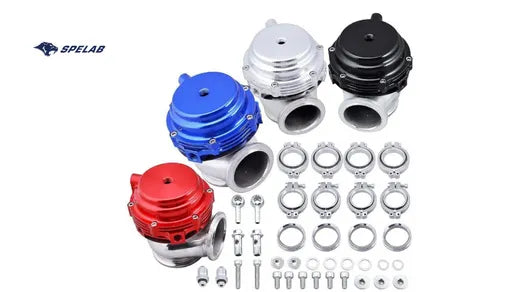A wastegate is a valve in the turbocharged engine mechanism. The wastegate works as a kind of safety valve ensuring the balance of air flow in the turbo. It is an outlet like a safety valve, which limits the volume of the exhaust gases into the turbine wheel. But, not all wastegates are created equal. There are two main kinds, internal and external. However, both of them have the same job, letting out extra exhaust gas when the boost gets too high. Let’s discuss it further in detail!
About Turbocharger
The car’s engine will require air for the fuel to burn and convert into power. Yet more than just keeping up air volume in the engine is not enough for the top-notch vehicle. This is the point where the turbocharger should be utilized. In this case, the air pump holds the role of a small engine air filter. While the engine is burning fuel, it consequently creates hot combustion gases. The gas combustibles in the chamber are directed to a turbine wheel inside the turbocharger, which works more like a small spinning blade. The paddle wheel is then spun very rapidly by the braking power of the hot reserve gases. The rotary motion of the turbine gear forces compressor wheels to deliver more air into the input system of the engine.
Wastegate Functions
Turbochargers force extra air into the engine, providing more power. However, excessive air can cause problems. The wastegate functions as a pressure relief valve. It monitors the level of air pressure in the engine through a sensor. When the boost exceeds a certain limit, the wastegate opens up a path and redirects some of the hot exhaust gases away from the turbine wheel to regulate the turbine’s speed. This prevents the engine from getting damaged due to excessive pressure.
Blow-Off Valve vs Wastegate
The wastegate and the valve called blow-off are both turbo protectors, but they have to deal with opposite problems. Wastegates are assembled on the exhaust area, similar to the safety valves. Such systems eject extra warm tailpipe gas to reduce turbo spinning and avoid damage from excess pressure. Differing from a blow-off valve, which is situated on the intake side. It is like a safety valve that you operate by letting go of the pressure when you do so It is this way that the condition known as compressor surge can not occur which is the one to damage the turbocharger. The turbocharger’s wastegate is the vigilant guard preventing the turbo from excessive wear and tear. The blow-off valve, in contrast, sweeps in and releases pressure before a blow-up occurs.
How Does the Wastegate Help Turbo?
Besides maximizing output, the wastegate in your turbocharged engine offers other advantages. Here’s how it works:
- Prevents Overboost:The wastegate safeguards your engine by diverting excess exhaust, preventing harmful overboosting.
- Optimizes Boost:By regulating boost pressure, the wastegate ensures your engine operates at its optimal level across various driving conditions.
- Improves Fuel Economy: By precisely controlling boost pressure and preventing over-boost, the wastegate contributes to better fuel efficiency. When the engine gets the right amount of air for combustion, it wastes less fuel.
- Reduces Turbo Lag: The fine-tuning of the wastegate is what slightly limits turbo lag by making sure that there is the right quantity of exhaust gases while taking into account the increase in pressure.
Signs of Faulty Wastegate
The first red flag is a check engine light. This light suggests to you that some problem has been detected by the car’s system. When a mechanic runs a scan tool into the computer, specific trouble codes related to the wastegate will appear, such as P0234 or P0245. Your car will also have no air, despite the need for power. Another issue created by the stuck-open wastegate is decreased fuel economy because the engine burns additional fuel to try and make up for the lost air, but the engine never reaches the best performance. By far the most dangerous scenario is a wastegate that is stuck shut and can cause an overboost which in turn can cause engine damage.
Choosing the Appropriate Size
Choosing the right size wastegate for your turbo is the key to maximum benefit. For instance, a larger turbo like a Tial 60mm would require a bigger wastegate like the Turbosmart 60mm option to handle the extra exhaust flow and prevent over-boosting. On the other hand, a smaller turbo might work well with a Turbosmart 44mm or 45mm wastegate. Remember, it’s usually safer to go a little bigger with your wastegate to ensure proper flow and avoid turbo damage.
Get SPELAB’s Wastegate for Turbo Health
Get a SPELAB wastegate to protect your turbo from overboosting and damage. It regulates exhaust flow, ensuring safe limits for your turbocharger, and promotes longevity and consistent performance. Invest in a SPELAB wastegate for a smooth and powerful ride.










